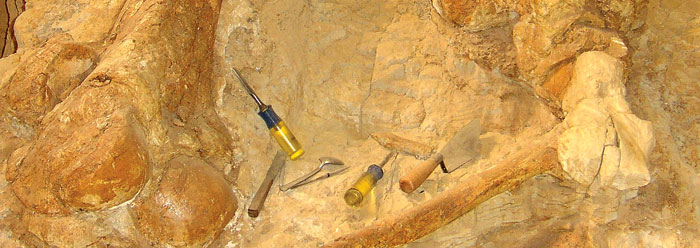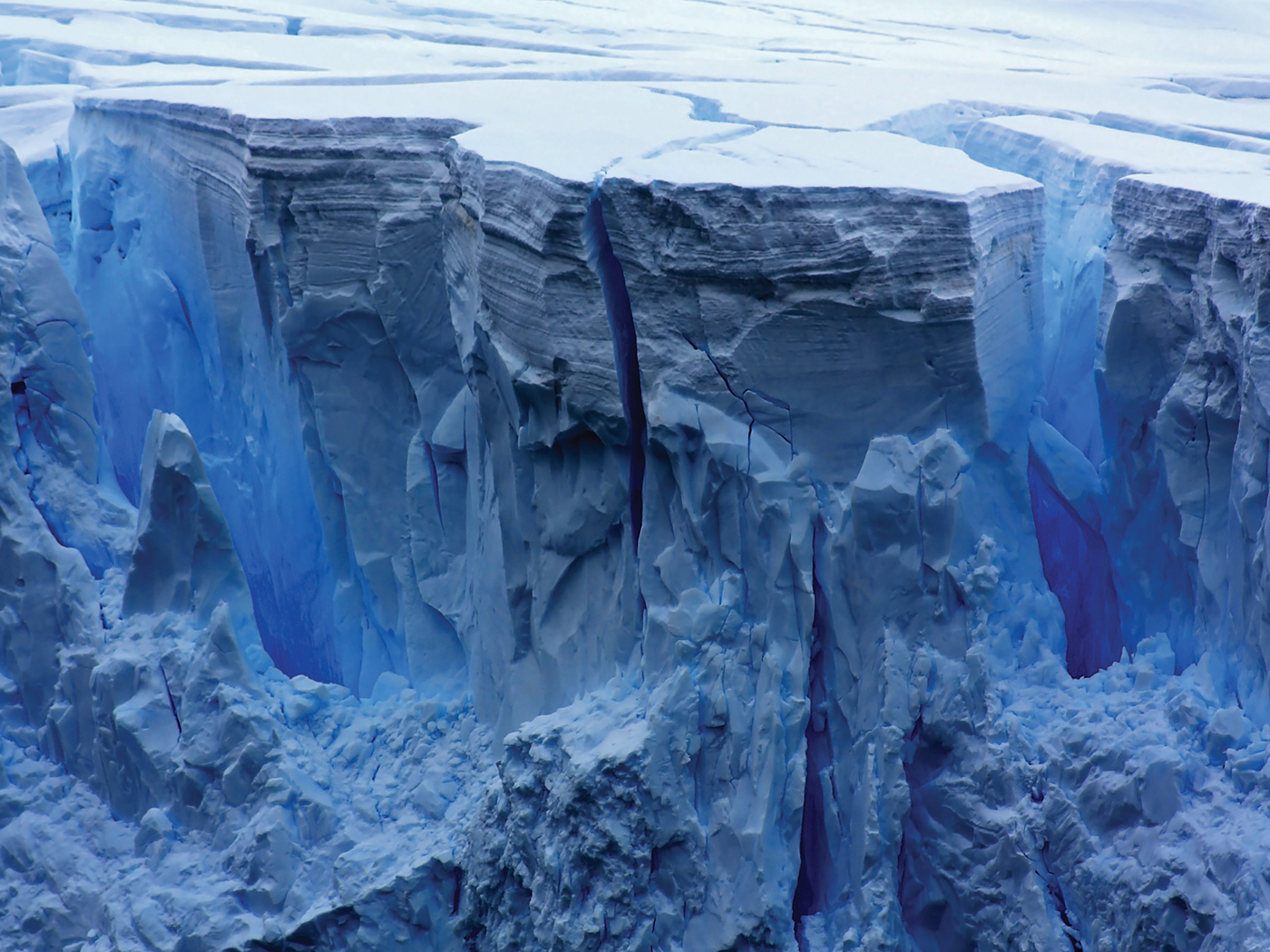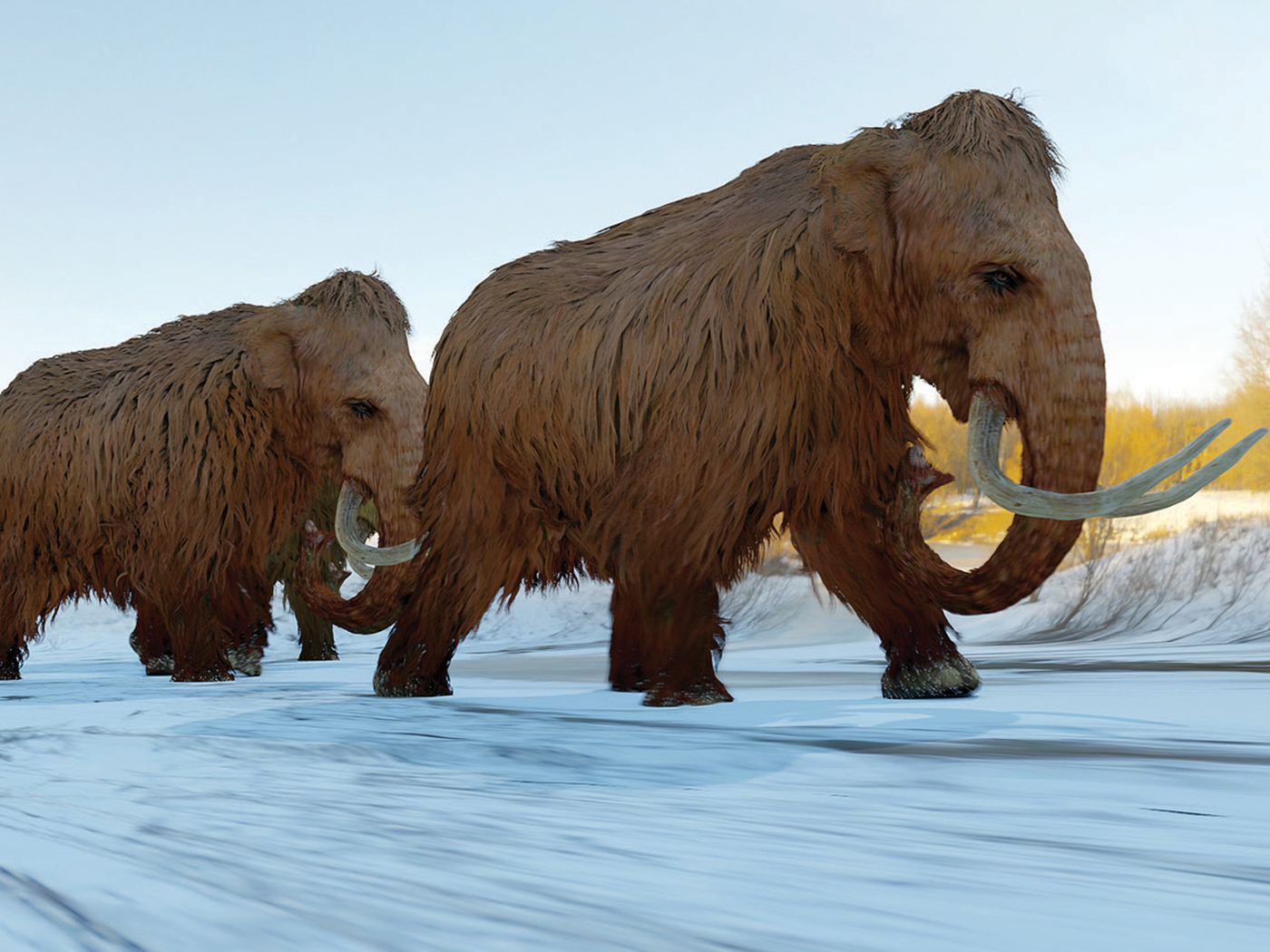The fossil record leaves an inescapable impression on the honest observer. It certainly doesn't communicate the macroevolutionary picture. The record of the past written in stone contains no evidence that any particular animal ever morphed into a fundamentally different type of animal. No trend can be found of gradual, Darwinian alteration through mutation and natural selection. These processes occur, but they are not mechanisms for true evolution of basic body styles.
Nor do we see punctuated equilibrium transforming them rapidly. Without a doubt, we see sudden changes in dominant fossil shapes as we ascend the geologic column, but this is not macroevolution. The species changes touted by punctuated equilibrium that we do see are either common variation of individual offspring, or adaptation of a population to differing conditions. Punctuated equilibrium doesn't even address the larger changes needed for meaningful evolution.
Sudden Appearance of Basic Types
On the other hand, the fossil record does communicate sudden appearance of basic types, complete with all the features which characterize them. Lots of variety is on display, even at times enough to lead to a new species.
But variety is not evolution. Cats are cats and dogs are dogs and always have been so. There are similarities between them, but no hint of relatedness. Both appear to have been suddenly created to live in similar environments, breathe the same air, eat the same foods, drink the same water, and survive through circulation of similar blood. We should expect similarities. But cats when they reproduce yield kittens, and reproducing dogs have puppies. They did not originate by mutations in a different type of common ancestor, nor did one come from the other. And this is what the fossils show.
Basic Types Show Stasis
Once a basic type appeared, it demonstrated stasis. Individuals varied in appearance and whole populations varied over the generations to accommodate changing conditions as they "multiplied and filled" earth's varied environments, but always they were fundamentally the same as the parent group.
The fossil record features stasis as a dominant trend. It does not speak of major changes. Evolution, or the descent from a common ancestor model, demands that major changes visited every population. But this is the evolution "story," not the conclusion drawn from the fossils.
Complexity at the Start
Each plant or animal alive today exhibits amazing complexity at the start. Each of its body parts is precisely designed to perform its function, and all work together for the good of the whole. Indeed, there often is no use for a particular part without the others. Some may only be used at a limited period of life or in an unusual circumstance, at which time they must be present for survival. All must be present for any to accomplish any useful purpose.
From the very first time a fossil type appears (i.e., the lowest stratigraphic interval in which it's found), it shows all the design features which make it special. Evolution necessitates the gradual accumulation of body parts through random mutation and amalgamation of previous parts with different functions into a new whole. The elegance of design, however, argues against a patchwork origin and for an intelligent cause. Mutations only mar, but do not erase, evidence of exquisite design.
Extinction, Not Evolution
Extinction is well-documented in the fossil record, and while extinction is a necessary part of the evolutionary scenario, it is not evolution. It might better be considered as the opposite of evolution. Losing a type is not what is in question, but the gaining of new types--now, that would be interesting.
A case can be made by fossil "splitters" that new species can be found as one ascends the strata. However, speciation within basic kinds is different from the introduction of new kinds, and evolution requires a dizzying array of basic new kinds. The origination of a new form has never been documented in the modern world of scientific observation, while perhaps several species every day go extinct. The opposite of evolution occurs today, and fossils show that the opposite of evolution also occurred in the past.
No Ancestor/Descendant Relationships
Evolution necessarily implies the concept of "descent from a common ancestor or ancestors." Yet no ancestor/descendant relationship can be advocated with certainty based on the fossils. Indeed, the differences are obvious and make classification between types possible.
The similarities between distinct types is not a sure footing on which to base an ancestral relationship, as proved by the many mutually exclusive cladograms advanced by evolutionists. Whose opinion, if any, is correct? The separateness of each type is witness to their separate creations.
Fossil Record Is Complete
The fossil record can be deemed essentially complete. Darwin was concerned about its lack of transitional forms, hypothetical creatures that demonstrate one type changing into another over time. He was hopeful they would be found one day.
But extensive exploration and fossil discovery in following years have not brought such in-between forms to light. The vast majority of taxonomic orders and families which live today are also found as fossils, yet without fossil transitions. We can be certain the record is substantially complete.
All Phyla Present at the Start
The "Cambrian explosion" constitutes a major episode in the history of life. If evolution were true, one would expect the record to start with one type of animal life, then increase to two, and so on. Yet fossil studies have shown that essentially all phyla were present at the start, each distinct from the others and each fully equipped to function and survive. Even vertebrate fish were present in the lower Cambrian.
Some phyla have gone extinct over subsequent years, but most have continued into the present. There is no evolutionary tree found in the fossils, as Darwin and his disciples have claimed. Rather, it is more like a lawn than a tree.
Many Fossils Found Throughout the Column
Stasis can be seen in the large, vertical, stratigraphic ranges of many fossil types. Index fossils are thought to exist only for a brief time span. True enough, some fossils are only found in a relatively few layers. But many other fossils, such as the brachiopod Lingula, can be found throughout the geologic column and into the present. This animal would seemingly make a good potential ancestor for others, but it never changed into anything nor arose from anything.
Various fossil types are found in many layers, with more fossil ranges being continually extended by new discoveries. Statistical treatments give reason to believe that essentially all types lived throughout a large portion of history.
Most Fossils Are Marine Invertebrates
At least 95 percent of all animal fossils are of marine invertebrates. They are found in great variety, but all are well-designed for life in the sea. Some lived in high-energy, near-shore environments, but others lived in the deep ocean, away from the pounding action of the waves.
Among the vertebrates, most fossils are fish, again mostly marine creatures. Of the terrestrial fossils, by far most are plants. Land-dwelling animals, such as mammals and dinosaurs, are poorly represented in the fossil record. The majority of animals depicted on evolutionary fossil charts in textbooks, however, are land vertebrates. It is thought that a possible case for evolution can be made from them, but this does not accurately portray the real fossil record.
Fossils Found in Catastrophic Deposits
These fossilized marine creatures are typically found in catastrophic deposits. Even marine creatures that live in high-energy zones cannot live in catastrophic conditions. Many died where they were fossilized. They were either buried alive, or their remains were transported by dynamic processes to their present resting places before they decayed or were scavenged.
The processes involved must have been highly destructive, yet rapidly acting. The major forces that sculpted earth's surface were not like the processes of today.
Indications of Violent Death
Often the fossil remains are found in a death pose. The famous Archaeopteryx fossil lies with its neck and tail arched back as if it were dying a horrible, drowning death. Clams are found with both halves tightly shut, "clammed up" as a living clam does for protection from danger.
Dinosaur fossils, also in death poses, are found ripped apart but often not scavenged. Fossilized animals give every indication they were violently killed and/or transported to the places we now find them.
No Complete Ecosystems
The fossils are usually entombed in deposits with no complete ecosystems present that could have supported them in life. Often evolutionists portray a fossil's tomb as a snapshot of life and tell stories about the creature's habits.
But these plants and animals are not necessarily found where they lived, or where they died. They are found where they were buried. It is not honest to presume patterns of life from transported remains of once-living things.
Animals from Mixed Habitats
Fossil graveyards often contain numerous animals from mixed habitats. Saltwater fish are sometimes found with upland dwellers. Crocodile fossils are found with deep sea denizens and desert and arctic mammals.
They could scarcely be lumped together in this way by the uniform processes of today. Some great cataclysm is needed.
Fossils Found Mostly on Continents
The catastrophic deposits in which the (mostly marine) fossils are found are almost all on the continents. A series of marine cataclysms inundated the land, destroying nearly everything there and laying down a record plain enough for all to see. Those terrestrial fossils which were deposited primarily date from the Ice Age that followed the great Flood of Noah's day.
Summary
Combining all these major concepts, we see that the fossil record is a record quite different from that presented in support of evolution. Each basic plant and animal type appeared abruptly and fully functional, and then experienced stasis throughout its tenure. Each type was complex and distinct at the start, without having descended from some other ancestral type, particularly from a less complex type.
All basic types which have ever lived were present at the start, and while some have subsequently gone extinct, no new basic types have appeared since the beginning. We have reason to believe substantially all basic forms which ever lived have been found as fossils.
A general rule is that the fossils extend through a lengthy stratigraphic range with little or no change. Most of the fossils are remains of marine invertebrates, found in catastrophic deposits, often in death poses with an incomplete ecosystem present. These predominately marine fossils are almost all found on the continents, not in the ocean.
The fossil record is thus quite incompatible with evolution and uniformitarianism, but remarkably consistent with the biblical record: Creation of all things in perfect form and function, the curse on all things due to man's rebellion, and the Great Flood of Noah's day which first destroyed and then renovated the entire planet.
Creation thinking predicts the evidence, while evolution must distort and flex the evidence and its position to accommodate it.
* Dr. Morris is President of the Institute for Creation Research.
Cite this article: Morris, J. 2010. The Real Nature of the Fossil Record. Acts & Facts. 39 (2): 12-14.






















